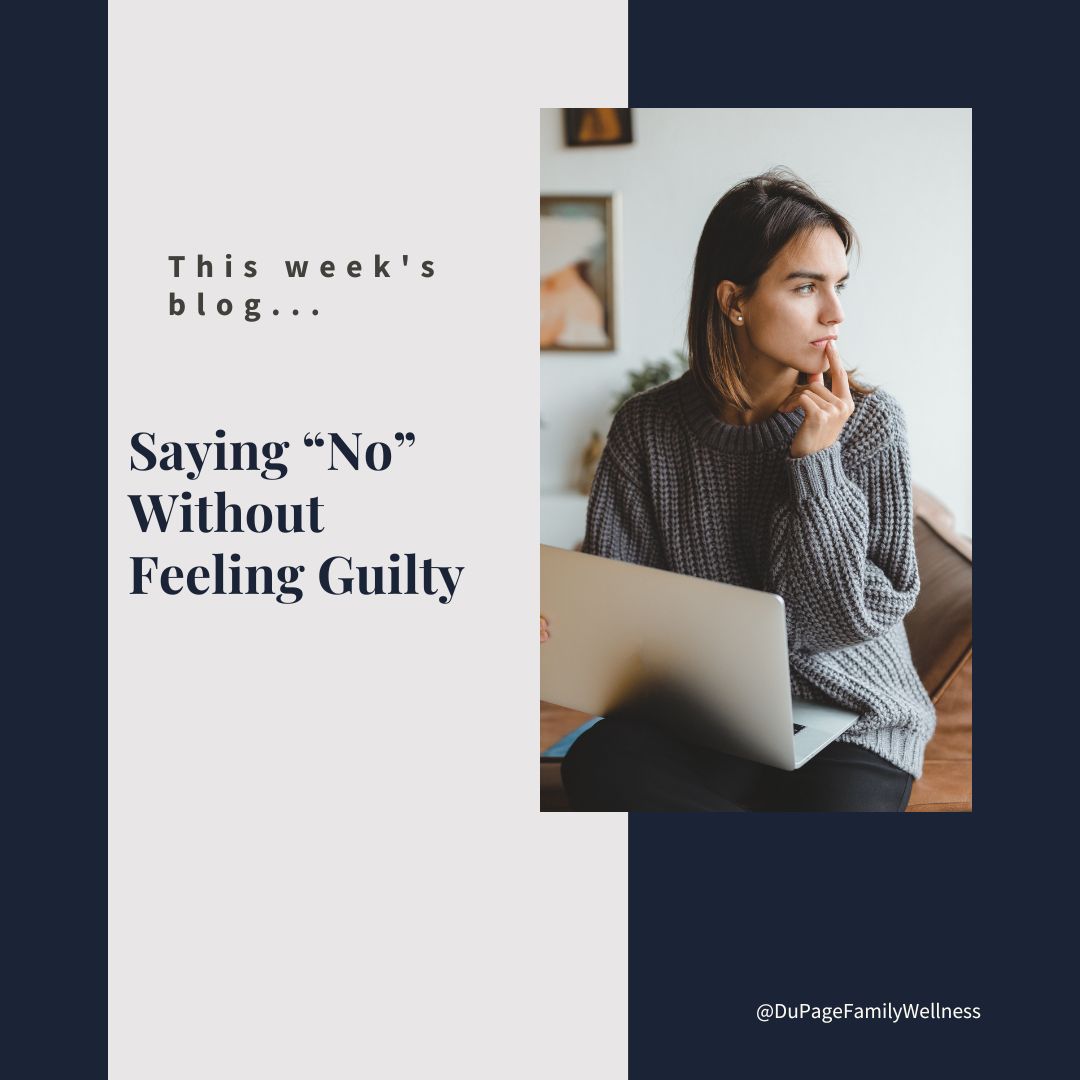 Getting ready for school can be exciting, but it can also be overwhelming. Buying school supplies, planning breakfasts, and packing lunches are a lot of work.
Getting ready for school can be exciting, but it can also be overwhelming. Buying school supplies, planning breakfasts, and packing lunches are a lot of work.
There can also be strong emotions during the transition. Parents might not be excited about the structure and routine school requires. Kids may be anxious, making them more irritable or sensitive than usual.
While parents can’t take all the stress out of the transition, they can help ease it when they have a plan. If they can keep their stress under control, the kids will feel it. A parent’s calm demeanor can set the tone in the home.
If you have a child heading back to school, check out these ideas to help you start the year strong.
School supplies
My kids love picking out their folders and binders at the store. However, at times, it can be stressful. School supply lists have gotten long and stores can be crowded. If going to the store doesn’t sound fun, consider shopping online.
Target's School List Assist makes online shopping simple. Follow this link, put your zip code in the box, choose your child's school/grade, and a list of needed supplies will appear in your cart. You can switch things out, so your kids can still choose their styles.
Backpack
Make the straps on your child’s backpack snug so that it doesn’t create an unnatural forward posture which puts a heavier load on the neck and shoulders. Encourage them to use both straps so the body doesn’t shift to compensate.
The weight of a full backpack should be less than 10-15% of the body weight of the person carrying it, so don’t overfill it. Putting the heaviest items closest to their body will adjust the center of gravity closer to their back; this makes the backpack feel lighter. If your child starts to complain about pain, bring their backpack with them to their next visit. We can work together to find a solution.
Breakfast
Here are some great recipes to make in advance.
Another option is to grab any protein, healthy fat, and non-starchy vegetables. It makes a complete nutritious meal. Be creative, and remember that breakfast doesn’t have to look like breakfast; leftovers work just fine!
Lunch
Typical lunches have high sugar and carbohydrate levels (i.e. bread, crackers, chips, cookies, pop, juice boxes, candy, etc.). They cause a blood sugar spike followed by a sudden blood sugar crash that leaves them feeling rotten.
Instead, choose a quality protein and fat. This will help maintain energy and focus all day. Here are some ideas…
- Sliced avocado wrapped in nitrate-free lunch meat
- Breadless sandwiches
- Guacamole and veggies
- Hard-boiled eggs
- Homemade soup
- Chicken, tuna, or egg salad (made with avocado oil mayo)
- Salad (with homemade ranch dressing)
- Leftovers
Sides could include a handful of nuts, apple and nut butter, unsweetened dried fruit, Lara bars, homemade muffins, quality cheese, full-fat yogurt, unsweetened applesauce, Paleovalley beef sticks, smoked salmon, homemade fruit snacks, or coconut bombs.
Routines
New routines take time to establish. A good morning routine starts the night before, so allow enough time in the evening to prepare for the next day. This is tricky because you also want to get the kids to bed on time without the harsh words stress can bring.
Different things will work for different families. Maybe your kids can pack their lunch or you could make it while dinner cooks. Perhaps your family would benefit from having an area where backpacks and shoes are always kept.
Even with the best of planning, giving yourself plenty of time in the morning is important. It will take some stress out of your morning routine and set your kids up for a great day of learning.
Give your kids, and yourself, lots of grace during this transition. And, remember, it is tough for most of us!
Dr. Jamie
 When you face the level of stress our society tends to live with, many people turn to food for comfort. There is nothing wrong with enjoying food or even using it for comfort at times. However, it can be helpful to realize when we are doing this, so we can make conscious choices that we will not regret.
When you face the level of stress our society tends to live with, many people turn to food for comfort. There is nothing wrong with enjoying food or even using it for comfort at times. However, it can be helpful to realize when we are doing this, so we can make conscious choices that we will not regret.
Leaning on food to fulfill an emotional need rather than a physical one is referred to as emotional eating. Most of the time people do not realize that they are doing this. Bringing their awareness to this habit can help them break out of cycles that may not be serving them.
Let’s look at emotional eating and explore some strategies to help break the habit.
Emotional Eating
Emotional eating is an attempt to self-soothe difficult feelings. It can be a way of numbing your feelings temporarily when you feel sad, anxious, lonely, angry, or bored. When you reach for food to fill an emotional need rather than a physical one, it is called emotional eating.
Not only are you distracted by the sweet or salty tastes, but it can affect the chemicals in your body. When you consume sugar, for example, your brain produces a surge of dopamine. Since dopamine is known as the feel-good hormone in the body, it brings a temporary feeling of relief or delight.
While it may be soothing in the moment, it doesn’t effectively deal with the underlying emotions and often leads to regret. It can lead to feelings of guilt and uncomfortable physical sensations associated with overeating.
Emotional eating may create unintended health consequences if you indulge in it often. There are many better ways to soothe yourself, but first, you need to recognize when you are attempting to eat your emotions.
Paying Attention
You may not even realize if you are emotionally eating, so the first thing to do is cultivate self-awareness. By listening to your body and paying attention to the clues, you can determine if you are truly hungry.
Before you eat, ask yourself how you feel. Are you sad, lonely, angry, or bored? If you are experiencing a difficult emotion, ask yourself if you are trying to meet an emotional need or if you are physically hungry.
It can be hard to tell, but the Mayo Clinic has identified some things to consider. For instance…
- Physical hunger generally comes on gradually after a period of not eating, while emotional hunger can come on suddenly even if you have eaten recently.
- Physical hunger is felt in the stomach, while emotional hunger is felt in the mind.
- Physical hunger often builds gradually, while emotional hunger tends to demand an immediate response.
- Emotional hunger often feels like it can only be satisfied with a specific type of food, while physical hunger can be satisfied with a variety of options.
- Emotional eating often makes you feel ashamed, while eating for physical reasons just ends up leaving you satisfied.
Choosing
Once you know what is motivating your desire to eat, you can intentionally choose your response. There is no right choice for every situation, but it is wise to make the decision consciously.
Instead of emotional eating, you may choose to…
- Distract yourself - watch a show, read a book, or engage in a hobby.
- Remove yourself from the situation - leave the room, go for a walk, or take a drive.
- Reach out to a friend - call, text, or visit a friend.
- Lean into the difficult emotion - let it wash over you, knowing it is temporary.
- Do self-care - journal, create something artistic, or enjoy some tea.
- Rest - nap if you are tired or sit outside for a minute.
- Exercise - even gentle movement can be beneficial.
- Practice mindfulness - practice deep breathing or choose a self-compassion exercise.
Emotional eating may be a tool you learned to keep you safe from emotions that feel too uncomfortable. But it is possible to learn other ways to deal with these difficult emotions, so you do not have to rely on emotional eating any longer.
Be gentle with yourself in this process. If you choose to deal with your feelings by eating, celebrate the fact that you decided to do so consciously. Eventually, you can develop the tools you need to soothe yourself in other ways.
Dr. Jamie
 Many of us have been conditioned by society to focus on others at the expense of ourselves. We are taught to obey our teachers and share with other kids. While we need to learn to function in a community, there must be a balance of give and take.
Many of us have been conditioned by society to focus on others at the expense of ourselves. We are taught to obey our teachers and share with other kids. While we need to learn to function in a community, there must be a balance of give and take.
There has to be a healthy place somewhere between the toddler who says "no" to everything, and the person who says "yes" to everything. When we do not have this balance, we can find ourselves overwhelmed, stressed, and depressed.
You may need to learn to say “no” without feeling guilty. Then you can make good decisions about where you spend your resources. It is the foundation for living a life that brings you fulfillment and joy.
Let’s look at some things you can do to work on it.
Practice Saying “No”
Everything new takes practice. It may help to start saying “no” to the little things when the stakes are not high. This may look like saying “no” to the clerk at the grocery store when they ask for a donation. If you want to give to the cause, you can decline this time and double up the next time you are there. As you become accustomed to this, you will develop confidence for times when it matters more.
Involve People You Trust
Let the people who make you feel safe know you are trying a new skill. Ask them to be understanding as you practice with them. Explain that it may feel different, but you need to grow in this area. To bring some humor into the situation you can ask loved ones to make outrageous requests; this gives you a light-hearted way to practice saying “no.” You could also involve them by asking them to remind you of your goals when you say “yes" to things that might not be in your best interest.
Give a Delayed Response
It can be hard to make decisions on the spot especially when someone is looking at you waiting for a response. Give yourself time to decide what you want by saying you will get back to them after you “check your schedule” or “talk with your family.” If they push you for an answer on the spot, tell them that if you have to decide now the answer will be "no."
Soften Your “No”
If an outright "no" feels too difficult, say “Maybe next time.” You can also consider offering to do an alternative activity. If asked to go to a movie you do not want to see, you could say you are not up for that but would enjoy hanging out at your house with them. Offering to help unpack is a great alternative to helping them move furniture and boxes.
Text Your Answer
It is often easiest to express yourself through text. You have time to choose your words carefully and it provides distance if they try to pressure you to change your mind. However, it is important to remember that you do not have the benefit of body language and tone. Many people say that only 7% of our communication comes from the words we say, the rest comes from body language and tone. So, read it carefully to make sure the message comes across the way you intend it to.
Remember
It is healthy to have boundaries that consider what you need; saying “no” will be necessary in establishing them. Only you can protect your time, money, and energy. It is not someone else's responsibility to do it for you. If you feel overwhelmed, stressed, and exhausted it may be a sign that you need to start saying no. Resentment is also a sign that you may be giving too much, so protect yourself and your relationships by learning this important skill. You don’t have to explain yourself; simply saying “no” is enough.
It is hard to make changes, but there are great benefits to learning to say “no.” Let me know if you are working on it.
Dr. Jamie
 It is helpful to look at how our ancestors lived as a guide for our choices today. We can learn so much from the way humans existed before modern conveniences were introduced into our lives. Doing so can help us understand our need for human connection, functional movement, and real unprocessed food.
It is helpful to look at how our ancestors lived as a guide for our choices today. We can learn so much from the way humans existed before modern conveniences were introduced into our lives. Doing so can help us understand our need for human connection, functional movement, and real unprocessed food.
Some of the ways our lives differ from our distant ancestors are obvious. We have stress from our jobs instead of the stress of surviving an animal attack. The movement we get in the gym is much different than the kind our ancestors got when they hunted game. However, some of the differences are not so clear.
Our ancestors experienced the weather very differently than we do. They were exposed to the elements and a range of temperatures daily. I am sure this was not always pleasant, but it did have some health benefits.
Let's look at how we can use extreme temperature exposure in our lives today.
Our Ancestors
We wake up in temperature-controlled homes, take warm showers, and drive to work in comfortable cars. Many of us work, live, and spend our days in buildings that maintain a steady, comfortable temperature. We may go to the pool on hot days, but we can head back inside when we have had enough.
Our ancestors did not have this luxury. They did not have a lovely air-conditioned home keeping the temperature at 70 degrees. There were no grocery stores; they had to be out in the elements to find food. Modern society does not necessitate exposure to the elements as it did for our ancestors.
Why it Matters
Our bodies have systems in place to regulate our temperature - shivering, goosebumps, sweating, changes in metabolism, etc. It’s good for our bodies to practice using these systems.
If our bodies never have to challenge these systems, they likely won’t work as effectively as if they were used regularly. I am not suggesting we put ourselves in danger (frostbite, heatstroke, etc.), but we do not want these systems getting too lax either.
Extreme temperature exposure benefits our mitochondrial function, immune system, fat storage, inflammatory levels, hormone production, cardiovascular system, blood sugar regulation, and detoxification.
Here is a great article and a scientific study with more details about hot and cold temperature exposure.
How to Experiment with Extreme Temperature Exposure
Check with your doctor if you are interested in trying this. There are many potential health benefits, but it is important to be careful. If you are suffering from any health concerns or chronic disease, it is wise to be even more cautious with this.
It is also important to listen to your body. There is a difference between being slightly uncomfortable and experiencing pain. If you begin to feel pain, you are likely pushing yourself too far. Start with small doses and less extreme temperatures; you can do harm if you jump into this too quickly.
What small step could you take to embrace extreme temperature exposures today? Play around with a few things to see what you would enjoy.
Dr. Jamie
 Hormones play a large part in reaching and maintaining a healthy weight. However, many common household items now contain chemicals that can disrupt our hormones. These hormone-disrupting chemicals called obesogens may predispose some people to become obese.
Hormones play a large part in reaching and maintaining a healthy weight. However, many common household items now contain chemicals that can disrupt our hormones. These hormone-disrupting chemicals called obesogens may predispose some people to become obese.
It can be tricky to avoid obesogens because they are pervasive in our society, but there are some ways that you can lessen their impact on your weight and your health. Because, even if you are not concerned about losing weight, do you want chemicals messing with your hormones?
Let’s take a look at obesogens and how to avoid them. I promise not to get too technical on you!
What are Obesogens
Obesogens are chemicals that interfere with the endocrine system and disrupt regular hormone activity. Your metabolism, energy levels, fat storage, and many other crucial functions of the body can be affected.
About a thousand of these chemicals are used in commerce today. The most common ones are bisphenol-A (BPA), phthalates, atrazine, organotins, and perfluorooctanoic acid (PFOA)
Most products have an ingredient list, but with a thousand endocrine-disrupting hormones used in manufacturing today, it is impossible to identify them all.
Where Obesogens Are Found
The "Think Dirty - Shop Clean" app makes it possible to evaluate products. It rates how toxic many home and beauty products are. You just type the product name into the app or scan the barcode to get the results.
The Environmental Working Group website is another great place to learn more about toxins in water, food, and products. Try plugging in a few of your commonly used products (soaps, shampoos, deodorants, makeup, etc.) to see the rating.
Some products to watch out for are…
- Body products - shampoo, soap, perfume, nail polish, lotion
- Cleaning supplies - detergent, dryer sheets, air fresheners
- Food - processed food, pre-packaged food, microwaveable meals, food stored in plastic, seafood
- Drinks - canned drinks, tap water
- Household products - non-stick pans, plastic containers, stain-repellant
What to Do
It can be overwhelming to discover all the products that contain Obesogens. If we try to limit all exposure, it will be next to impossible. Chances are the anxiety created from this attempt will be worse for you than minimal exposure.
Do the best you can to make reasonable changes over time. You may need to get creative if the cost is a factor; maybe going to a thrift store would make some of these changes possible or ask for some of the products you would like for a present.
Where to Begin
If you need a place to start, follow the suggestions below…
- Wash your hands - use a good hand soap to rinse off any residue of endocrine disruptors.
- Get rid of plastic - use glass containers to store food. Drink water from glass or stainless steel. Bring cloth bags when you shop. Focus on wooden or cotton toys.
- Replace nonstick cookware - opt for cast iron, ceramic, glass, or stainless steel.
- Eat real food - choose fresh meats and produce rather than food made in a factory.
- Purify your water - use a water filtering system and store the water in a glass jar.
- Clean your home - use clean products that you have researched (see the app mentioned above). Vacuum and dust often reduce dust particles in the air.
If this information is overwhelming you, take a breath. We aren’t striving for perfection; little changes go a long way!
Dr. Jamie
 Getting ready for school can be exciting, but it can also be overwhelming. Buying school supplies, planning breakfasts, and packing lunches are a lot of work.
Getting ready for school can be exciting, but it can also be overwhelming. Buying school supplies, planning breakfasts, and packing lunches are a lot of work. 

 When you face the level of stress our society tends to live with, many people turn to food for comfort. There is nothing wrong with enjoying food or even using it for comfort at times. However, it can be helpful to realize when we are doing this, so we can make conscious choices that we will not regret.
When you face the level of stress our society tends to live with, many people turn to food for comfort. There is nothing wrong with enjoying food or even using it for comfort at times. However, it can be helpful to realize when we are doing this, so we can make conscious choices that we will not regret. Many of us have been conditioned by society to focus on others at the expense of ourselves. We are taught to obey our teachers and share with other kids. While we need to learn to function in a community, there must be a balance of give and take.
Many of us have been conditioned by society to focus on others at the expense of ourselves. We are taught to obey our teachers and share with other kids. While we need to learn to function in a community, there must be a balance of give and take.  It is helpful to look at how our ancestors lived as a guide for our choices today. We can learn so much from the way humans existed before modern conveniences were introduced into our lives. Doing so can help us understand our need for human connection, functional movement, and real unprocessed food.
It is helpful to look at how our ancestors lived as a guide for our choices today. We can learn so much from the way humans existed before modern conveniences were introduced into our lives. Doing so can help us understand our need for human connection, functional movement, and real unprocessed food.  Hormones play a large part in reaching and maintaining a healthy weight. However, many common household items now contain chemicals that can disrupt our hormones. These hormone-disrupting chemicals called obesogens may predispose some people to become obese.
Hormones play a large part in reaching and maintaining a healthy weight. However, many common household items now contain chemicals that can disrupt our hormones. These hormone-disrupting chemicals called obesogens may predispose some people to become obese. 